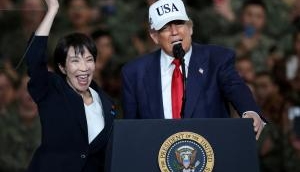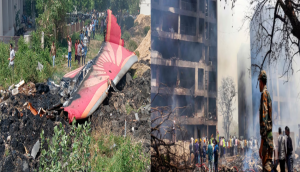
China's belt and road initiative, which was launched in 2013 with an audacious plan to harness the juggernaut of the Chinese economy to the goal of Asian economic development, is on the verge of crisis as BRI has become a burden for Beijing rather than a benefit.
Nine years ago, China chose Pakistan's Gwadar as the launch pad and presented it as Beijing's commercial window onto the Indian Ocean, a hub for regional integration under the Belt and Road Initiative but still many projects have either failed to get off the ground or produced mixed to poor results, Nikkei Asia reported.
First announced in a speech by Chinese President Xi Jinping in 2013 as the "Silk Road," the BRI was fleshed out in April 2015 with the announcement of the China-Pakistan Economic Corridor (CPEC), stretching from Gwadar to the Chinese city of Kashgar, in Xinjiang.
The CPEC showcased the China-Pakistan "all-weather friendship" with USD 46 billion in pledged funds that have since grown to USD 50 billion. It was to be the backbone of the now renamed Belt and Road Initiative.
When the CPEC agreements were signed, Pakistan's government called Gwadar "the economic future of Pakistan," and even claimed that Gwadar's gross domestic product would increase from an estimated USD 430 million in 2017 to USD 30 billion by 2050, and produce 1.2 million jobs for a population that currently stands at 90,000.
But today, with just a couple of months until the 20th Chinese Communist Party Congress in Beijing, the CPEC is on the verge of crisis, as is the BRI itself.
Nearly eight years after China announced a list of development projects in the city like a new airport, the Gwadar Free Zone, a 300-megawatt coal power plant and a water desalination plant but none of these have been completed and what investment there has done little to create growth or an economy, according to Nikkei Asia.
As of total investment from 2013 to 2022, China has spent USD 53 billion in Pakistan.
A 300-MW power plant was to be built in Gwadar but so far the work has not started. The power shortage is arguably the biggest stumbling block for any meaningful development there.
Michael Kugelman, deputy director of the Asia program at the Wilson Center in Washington, says Gwadar is a victim of outsized expectations. "There was an assumption that new infusions of Chinese capital and technology would magically develop Gwadar into a world-class port, even though previous efforts to achieve similar goals had fallen far short," he said.
When it launched the BRI in 2013, Beijing's main motivations were domestic, according to Gong Chen, founder of Beijing-based think tank Inbound, who advised the central government about the BRI in the early days.
Chen said that, when the concept was first presented to policymakers, its primary drivers were China's severely ageing population, the difficulty of recruiting workers in the Pearl River Delta, China's desire to expand its market scale and an overhang of excess capacity in many economic sectors.
In Sri Lanka, another focal point of the BRI, Chinese loans triggered an infrastructure boom but also a debt overhang that arguably helped push the country into its first debt default in May and drove former President Gotabaya Rajapaksa from power, reported Nikkei Asia.
Many Sri Lankans resent what they see as China's role in using its largesse to prop up a corrupt elite around Rajapaksa. They are demanding an end to the corruption and mismanagement that has left millions of people facing acute shortages of food, fuel and medicine.
Chen of Beijing-based thinks tank Anbound said that BRI may shrink from a strategic vision of economic cooperation across land and sea to a regional multilateral cooperation initiative, or completely abandon it on a gradual basis but again depending on the top leader's will.
(ANI)







![BJP's Kapil Mishra recreates Shankar Mahadevan’s ‘Breathless’ song to highlight Delhi pollution [WATCH] BJP's Kapil Mishra recreates Shankar Mahadevan’s ‘Breathless’ song to highlight Delhi pollution [WATCH]](https://images.catchnews.com/upload/2022/11/03/kapil-mishra_240884_300x172.png)

![Anupam Kher shares pictures of his toned body on 67th birthday [MUST SEE] Anupam Kher shares pictures of his toned body on 67th birthday [MUST SEE]](https://images.catchnews.com/upload/2022/03/07/Anupam_kher_231145_300x172.jpg)






